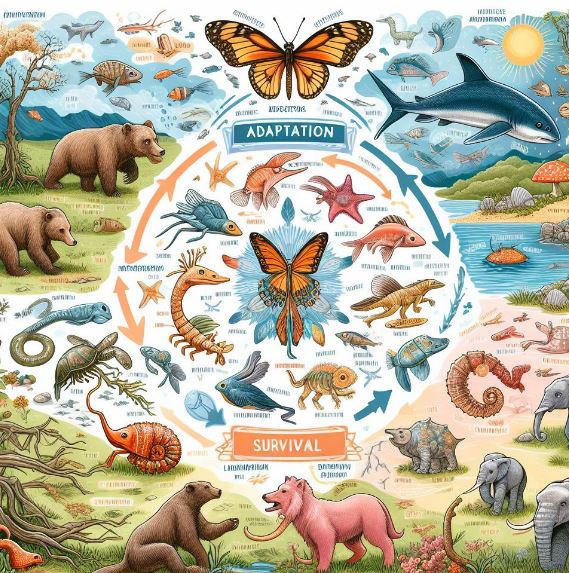After their victory in the Persian Wars, the city-states of Greece, led by Athens, formed the Delian League. Athens, becoming the leader of the Delian League, began to grow increasingly powerful. This rise in power was met with discontent by Sparta, which subsequently formed the Peloponnesian League and confronted Athens. Finally, in 431 BC, the Peloponnesian War broke out between Athens and Sparta, lasting until 404 BC. The war ended with a Spartan victory, and Sparta took over the hegemony in Greece, but it was weakened by the long conflict. Eventually, Sparta ceded its dominance to another city-state, Thebes.
While the Greek states were depleting their national resources in war, Macedonia to the north was gathering strength. In 338 BC, King Philip II of Macedonia defeated the combined forces of Athens and Thebes at the Battle of Chaeronea and conquered Greece. Following this, the renowned Alexander ascended to the throne, subdued the Greek city-states completely, launched a campaign against Persia, conquered it, and advanced as far as the Indus River. At the young age of 20, he became a king and within just ten years, he conquered a vast territory reaching across Europe, Egypt, and India, becoming a great conqueror.
Alexander died at the age of 33. He had acquired vast territories by the age of 33, but, regrettably, he had to leave them to those who survived him. After all, Persia had already occupied most of the regions, so conquering Persia meant that most of the lands Alexander conquered became his share. A comparison of the territories of the two empires at that time shows there was not much difference between them.

He did not have a strong successor to maintain his territories alone. Therefore, on June 13, 323 BC, the generals who had assisted Alexander and participated in about ten years of conquest wars gathered in the dying Alexander’s bedroom. They asked him to whom he would leave the empire. The dying Alexander is said to have left only the words, ‘to the strongest.’ The generals, who considered themselves ‘the strongest,’ were now in a situation where they had to prove their strength. After 23 years of rivalry, by 301 BC the empire was divided into four nations: Syria, Macedonia, Egypt, and Thrace, and eventually entered into a tripartite era with the Antigonid dynasty in Macedonia, the Ptolemaic dynasty in Egypt, and the Seleucid dynasty in Syria.
Was it the strong ones, as Alexander’s will suggested, who survived? Not only nature but also history changes according to the law of survival of the fittest. In short, the strong survive, and those who are not strong disappear.
Survival of the Fittest
In 1831, at the age of 22, Darwin set sail from England on the HMS Beagle for a voyage to the Pacific. While the crew’s mission involved surveying the coastline of South America and the islands of the Pacific, Darwin boarded as a naturalist to collect specimens of animals and plants and to make biological and geological observations. The Beagle arrived at the Galapagos Islands, located about 600 miles off the west coast of South America. Darwin discovered different finches and tortoises on each island visited, and he left the following record:
“Considering the small size of these islands, we feel the more astonished at the number of their aboriginal beings, and at their confined range… Hence, both in space and time, we seem to be brought somewhere near to that great fact, that mystery of mysteries –the appearance of the new beings on this earth.” (Darwin, 1845).

Observations of nature by Darwin, along with research from other scientists, pointed to one fact: species change. Contrary to the belief at the time, Darwin accepted the hypothesis that species are not fixed or immutable, but rather change over time.
After his voyages, Darwin continued his studies on the variation of domesticated organisms at home. He noted that more variations occurred in domesticated plants and animals compared to those in the wild. For example, through intentional breeding of pigeons, completely new variants emerged after several generations. These new variants resembled wild pigeons but differed in various ways.
It was confirmed that through human ‘selection’, new traits could be created in animals and plants. So, how does change occur in nature? In other words, if humans select for new forms of plants and animals at home, what selects these new traits in nature? How were the different turtles Darwin observed in the Galápagos formed? Ultimately, it must be natural selection, not direct human choice. While human-directed selection can create new species relatively quickly, natural selection forms new species more slowly.
Typically, individuals with advantageous mutations are most suited to survive and reproduce. Most individuals with disadvantageous mutations will die, but the survivors will pass their mutations to their offspring. Over time, these advantageous mutations accumulate. As these accumulate, these individuals diverge from the original members of their species, eventually evolving into new species.
If a beneficial mutation occurs in an organism, individuals with such traits will have the best chance of surviving the struggle for existence, and through the firm principles of genetics, they will produce offspring with similar traits. The principle that the most fit individuals survive and are preserved is called natural selection. This logic proved the survival of the fittest, essentially demonstrating that the survivors are the strong ones.
The ‘fittest’ refers to those who are suited to the environment. The essence of evolution is not about surviving individuals, but traits that aid survival. It is not the individual with advantageous traits who survives, but the advantageous traits themselves that persist. Today, everything we encounter, whether material or mental, includes traits of the strong. Those with such traits are positioned advantageously for survival.
The first to think about evolution was the French biologist Jean Lamarck, who proposed the theory of use and disuse. This theory suggests that the continuous use of parts of an organism leads to their development, while unused parts weaken, shrink, and eventually disappear. Lamarck also thought that traits acquired or incidentally gained during an animal’s lifetime could be passed on to its offspring. Thus, traits that develop through use and degenerate through disuse would be inherited. For example, birds like herons extended their legs to lift their bodies out of water, leading to longer legs, and giraffes continued to stretch their necks to reach treetop buds, becoming animals with long necks.

In conclusion, it has been discovered that acquired traits cannot be genetically inherited in animals. However, humans are different. If we develop new competitive know-how, we can teach, learn, and train our descendants. Humans possess the ability to actively select advantageous traits more so than other organisms. This is what differentiates us. In other living beings, differentiation occurs through passive mutations. Individuals, companies, and nations with superior technology or knowledge can grow faster through proactive differentiation.
Our competitiveness can therefore be determined by learning and personal choice. In nature, mutations occur by chance. Organisms with advantageous traits occupy a favorable position in competition and pass these traits to their offspring. This involves the process of random mutation occurrence, differential adaptation to the environment, natural selection, and the heredity of mutated traits, which then spread widely.
Successful differentiation in humans often becomes a model for many others and spreads widely. Thus, mutation, selection, and dissemination in the ecosystem correspond directly to active differentiation, selection, and replication in human society.
In fact, our society tests many technologies and designs to see how they work, adopting the good ones more widely and discarding the less effective. As a result, the adopted technologies and businesses that survive and succeed are replicated. Market competition, whether the actors are individuals, companies, or nations, accelerates creative differentiation. Successful technologies, ideas, and behaviors are gradually and continuously propagated, becoming a trend known as ‘fashion’ in society and forming its culture. Similarly, in nature, nature selects organisms, but in the business world, the market selects companies. If there is natural selection in nature, there is market selection for companies and individuals.
Friedrich August von Hayek, who received the Nobel Prize in Economics in 1974, pointed out that competition is a ‘discovery process(procedure).‘ This process of discovery represents the process of evolution, and the direction of evolution is to become the most suited to the environment. So, how can I make myself the strongest? One must become the fittest for the environment. However, this is not possible for everyone. Competition exists because resources are scarce, and, naturally, there is always an opponent. In other words, the scarcity of resources and the presence of competitors are the conditions for the existence of competition.
The existence of opponents indicates that the essence of competition lies in strategy. Strategy is the planning of my actions in response to the actions of others. This is the basic nature of game theory, which is covered in microeconomics. Ultimately, game theory provides answers to how I should make decisions considering the actions of rational competitors who are maximizing their payoffs.
For companies, establishing a competitive strategy has intrinsic meaning in connecting the company with its surrounding environment. The same is true for individuals. Strategy involves thinking that considers not only oneself but also the environment and opponents.


답글 남기기